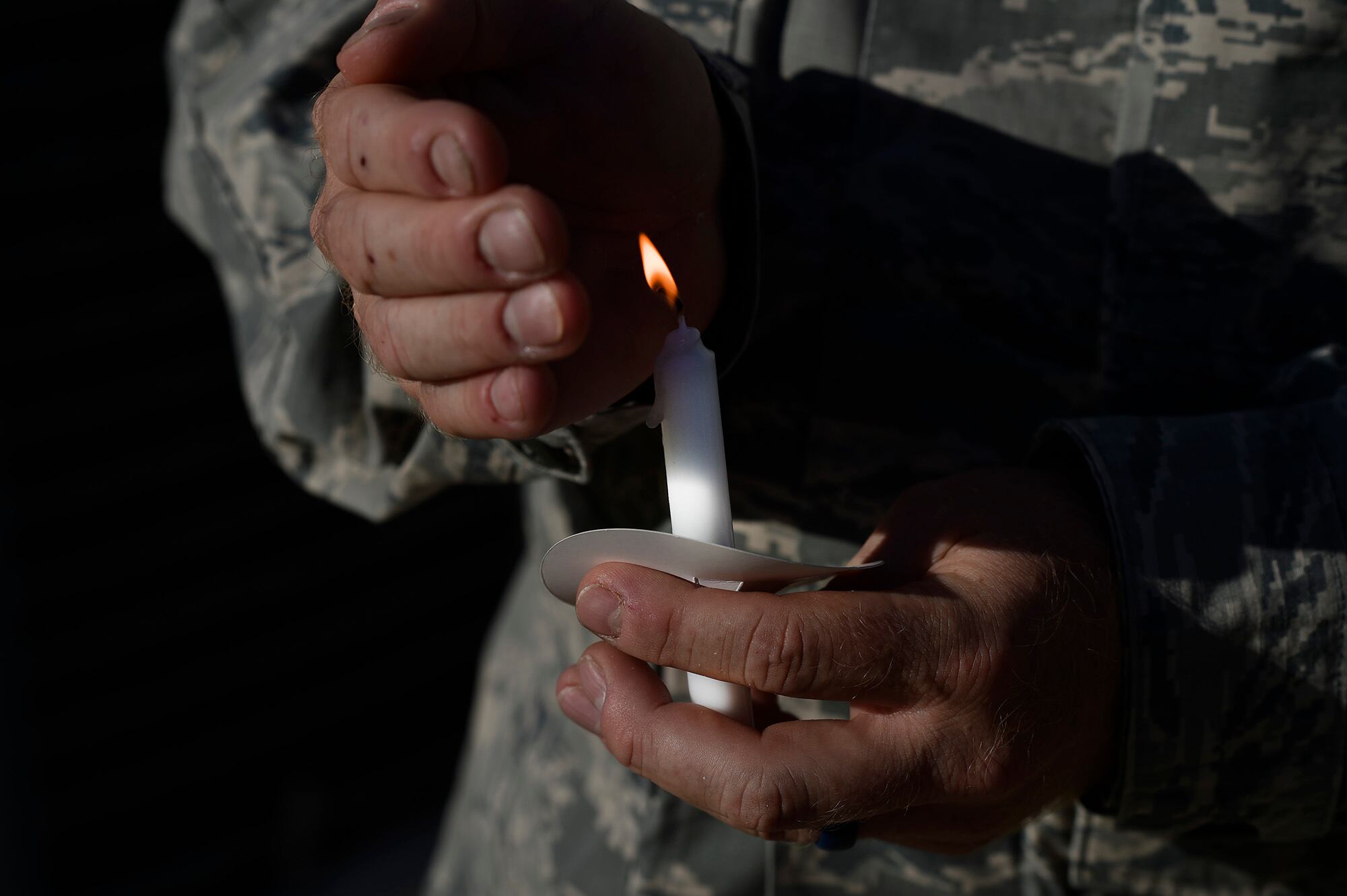Military installation law enforcement officials’ inadequate responses to incidents of domestic violence may be exposing victims to more harm, and hindering commanders and prosecutors in their ability to make informed decisions about disciplinary and prosecuting actions, a Defense Department Inspector General investigation has found.
These inadequate investigations and documentation, such as not submitting fingerprints to the FBI database, could also have an impact on law enforcement and national security by allowing someone to purchase a firearm who shouldn’t, or allowing someone to illegally enter the U.S. who had previously committed a crime or had ties to a terrorist organization, investigators stated.
Among other things, the IG recommends the services conduct a comprehensive review of criminal investigative databases and files to verify that all subjects arrested in domestic violence incidents from 1998 to present are properly entered into the Defense Central Index of Investigations.
While the military services’ law enforcement policies related to responding to incidents of domestic violence are consistent with DoD policies, law enforcement entities don’t always consistently follow those policies at the installation level, the DoD IG found. IG auditors recommended that the services emphasize the importance in following these policies in writing to military law enforcement agencies.
The military service law enforcement personnel didn’t consistently process crime scenes or conduct interviews thoroughly. They didn’t consistently notify Family Advocacy Program staff of the domestic violence incidents or submit criminal history data, according to the April 19 IG report released April 24.
RELATED

The IG found that commanders sometimes instructed law enforcement personnel to implement practices that weren’t consistent with DoD requirements. They also found that supervisors didn’t make sure that law enforcement personnel had the equipment they needed to respond to domestic violence incidents, and that law enforcement supervisors didn’t perform effective oversight.
The auditors evaluated two installations from each service — the one with the highest number of domestic violence incidents, and an installation with a low number of incidents. They evaluated 219 non-sexual domestic violence cases in a random sample of the 956 incidents of law enforcement response at those installations.
DoD regulations require that law enforcement personnel collect and preserve all physical evidence reasonably necessary, including photographic evidence substantiating the victim’s injuries and crime scene, and other physical evidence. Personnel are required to conduct interviews with all victims, subjects and witnesses, including adults and children, and they’re required to notify family advocacy personnel immediately when a domestic violence report is received.
Of the 219 incidents reviewed, 201 — 92 percent — had some element where law enforcement didn’t comply with DoD regulations, auditors stated.
One example noted in the report was an incident at Quantico Marine Corps Base, Virginia, where the victim reported the subject punched walls, hit various items, and broke a television. But the incident report didn’t indicate that law enforcement conducted a search to find the damaged property, nor did they take pictures.
In another example at Joint Base Elmendorf-Richardson, the subject allegedly held a knife to the victim’s throat while strangling and threatening her, but law enforcement didn’t seize the knife used in the assault.
The services’ law enforcement personnel didn’t consistently submit subject fingerprints and final disposition reports, “which could have serious, even tragic, consequences, such as allowing someone to purchase a firearm who should not be able to purchase one,” auditors stated.
Out of 247 subjects apprehended in the 219 investigations (law enforcement arrested both parties in some instances), there were 194 people where there was enough evidence of offenses that would have required their fingerprints to be submitted to the FBI Criminal Justice Information Services Division, or CJIS. But 71 percent of those that should have been submitted were not. In 76 percent of the cases, a report of the final disposition of the case was not submitted.
The Army and the Marine Corps had the highest number of cases where fingerprints should have been submitted — the Army, 64; the Marine Corps, 63. The Marine Corps submitted 59 percent of the fingerprints they should have; the Army submitted 6 percent of the required fingerprints. The Navy should have submitted 16 sets of fingerprints, but submitted none. The Air Force submitted two out of 34 sets of fingerprints, or 6 percent. Navy Criminal Investigative Service submitted 14 out of 17, or 82 percent of those that were required.
“The failure to submit all required fingerprint records to the FBI CJIS Division database can allow someone to purchase a firearm who should not, hinder criminal investigations by preventing law enforcement from identifying subjects based on fingerprint matches, and potentially impact law enforcement and national security interests by allowing individuals to illegally enter the U.S. who may have previously committed crimes or have ties to terrorist organizations,” the auditors noted in their report.
The auditors recommended that fingerprint cards and final disposition reports be collected for all the subjects that the IG determined weren’t submitted; and that DNA samples be collected and submitted to the Defense Forensic Science Center.
In their responses to the IG draft report, service officials noted various steps they are or have been taking to address some of the recommendations. The IG will follow up on their progress.
Army officials questioned whether their noncompliance rate as stated by the IG is accurate. They noted the auditors didn’t state when the IG’s fingerprint and DNA data pulls were taken on the 219 subjects, so if those data pulls were taken early in the IG review period, from September 2017 to January 2019, it might not have reflected the Army’s efforts to review their compliance with the criminal justice information reporting, no later than April 2018.
The Army Crime Records Center will review the cases and ensure they are properly entered into the Defense Central Index of Investigations. But it’s not clear whether they can verify all subjects in domestic violence cases dating back to 1998, because their legacy Records Management System only goes back to 2004, officials stated in their response.
The Navy has been reviewing all its cases dating back to 1998 to ensure that all subjects had properly noted criminal histories. To date, they’ve reviewed more than 148,000 cases, including but not limited to domestic violence, and discrepancies are being addressed, officials said. They’ve placed emphasis on ensuring they identified subjects who should have been fingerprinted.
Air Force officials are addressing various aspects of the report, too, such as making sure fingerprints and DNA samples are submitted for all subjects that the IG determined weren’t submitted. The estimated completion date is July.
They disagreed, however, with several of DoDIG findings that procedures weren’t followed when collecting evidence, conducting interviews and gathering photographs. “The report erroneously states that DoDI 6400.06 lists these items as requirements. These items are not requirements but instead are items law enforcement should consider and/or establish,” stated the Air Force response.
Karen has covered military families, quality of life and consumer issues for Military Times for more than 30 years, and is co-author of a chapter on media coverage of military families in the book "A Battle Plan for Supporting Military Families." She previously worked for newspapers in Guam, Norfolk, Jacksonville, Fla., and Athens, Ga.




